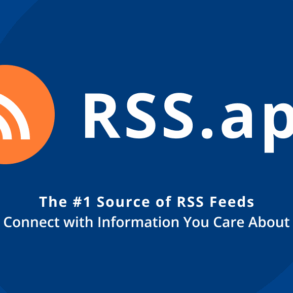
From the point of view of the “economic man”, a comprehensive trade-off of factors such as price and quality is the main determinant of the sales potential of products [1]. Nevertheless, the contemporary consumption pattern is largely guided by the non-functional symbolic attributes of brands [2]. Such behaviors of purchasing and exhibiting expensive goods with symbolic attributes to impress others that one has wealth or status are labeled as “conspicuous consumption (CC)” [3]. In recent decades, CC has spread broadly among the Chinese young generation [4]. However, given the limited savings of many young people, CC may adversely affect their financial situation and increase their indebtedness [5]. Moreover, CC also has some unfavorable psychological outcomes. For instance, consuming expensive products that don’t match an individual’s actual identity increases the sense of inauthenticity and thus reduces subjective well-being and confidence [6, 7]. Therefore, it is necessary to identify the antecedent variables of CC among young people.
Previous studies have revealed that certain psychological factors can predict CC, such as social status display [8], the desire for access to elite social strata [9], power deprivation [10], and lower subjective socioeconomic status [11]. What these psychological factors have in common is that they all involve the motivation of seeking status. Considering that conspicuous products are symbols of wealth and status, it is possible that people buy and display these conspicuous products (i.e., CC) in pursuit of status to construct an ideal self-image [3, 8, 12]. Moreover, with the development of the Internet, behaviors intended to present a good image (including CC) are no longer limited to the offline scene, but have begun to appear frequently in the network [12, 13]. In particular, social networking sites (SNSs) provide users with a platform for the creation and exchange of user-generated content [14, 15], which makes it more convenient to display a variety of conspicuous products. As related studies have illustrated, the usage of SNSs can positively predict CC [13, 16, 17, 18, 19]. In addition, the young population is the main user group of SNSs [20], and for them, SNSs are also an integral part of life. Therefore, SNS use may be one of the important environmental variables affecting their CC.
However, while previous studies have generally confirmed the positive predictive effect of SNS use on CC, their measures of SNS use are mostly based on self-report of the intensity of overall usage, without differentiating between specific patterns of use. Generally, individuals can participate in SNSs in two ways. One is active use, which refers to activities that facilitate direct exchanges with others (e.g., direct communication and broadcasting); the other is passive use (PSU), which refers to passively browsing on SNSs and consuming information without direct communication (e.g., viewing other users’ profiles and scrolling through news feeds) [14, 21, 22]. In fact, it seems that the psychological and behavioral consequences of these two patterns of SNS use are inconsistent [14, 15]. PSU may be associated with more negative emotional and cognitive outcomes especially [14, 15, 23]. Nevertheless, most youths participate in SNSs mainly for passively browsing (called passive users) rather than actively posting (called active users) [22], making it meaningful to investigate the relationship and psychological mechanisms between PSU and CC among young people. Furthermore, since the method used by previous studies was mainly based on self-report, which did not allow causal inferences, this research considered using an experimental method to explore the predictive effect of PSU on CC.
Passive social networking site use and conspicuous consumption
Based on the cultivation theory, media constructs users’ perception of social reality and shapes their values about material and consumption [24]. Cultivation effects result from the steady and recurring portrayals in the media [25]. By exposing users to certain information frequently, media spread certain values and norms of behavior (including those related to consumption). Among various media, SNSs provide a platform for the public to generate diverse content and opinions and widely spread them [15, 22]. According to Khamis and colleagues [26], this transmission of information on SNSs is mainly driven by a specific kind of identity construction (self-mediation), aimed at maintaining a good self-image. Therefore, what users post and share online is well-embellished and intended to be shown to others. For image management purposes, users may show off their wealth or social status on SNSs, such as displaying luxury products or expensive services [12, 13]. Therefore, CC-related symbols are embedded in the content shared by SNS users. Due to the increased accessibility of CC-related content while browsing SNSs, PSU users are motivated to imitate CC [24]. As a result, PSU may prompt people to engage in CC. Related research has shown that PSU significantly positively predicts materialism [27] and overspending [19], both of which are closely associated with CC. Thus, we proposed our first hypothesis:
H1
PSU can positively predict CC.
The mediating role of relative deprivation
If PSU can increase CC tendency, what is the internal mechanism? The second goal of this research was to investigate possible mediating factors between PSU and CC and fill in the gap. Based on the compensatory consumption behavior model, the consumption of products is sometimes driven by the motivation to compensate for psychological assets [28]. For conspicuous goods, it is a symbolic signal of wealth and status [3]. Thus, psychological factors associated with perceived inferiority of wealth and status, such as the sense of relative deprivation (RD), may be potential mediating factors.
RD is an individual self-judgment that regards oneself as worse off compared to some standards, accompanied by feelings of anger and resentment due to the discrepancy from the ideal state [29]. RD could arise from PSU. As mentioned earlier, when users are just silently observing others on SNSs, they usually receive lots of positively skewed information presenting a perfect self and an ideal life [26]. Exposing to idealized information of others may motivate upward comparison [15, 23, 27, 30, 31]. Upward comparison is a form of social comparison with others who are better than themselves in some aspects, which is often accompanied by dissatisfaction, perceived unfairness, and jealousy and resentment toward others [15, 30, 31, 32, 33], which lead to the feeling of RD [34]. Therefore, we considered that PSU can positively predict RD.
Furthermore, the sense of RD is likely to evoke unpleasant responses (such as stress) [35]. As a result, people are encouraged to self-regulate in order to improve the current situation [29], and these adjustments can be reflected in consumption behaviors [36]. On the ground of the compensatory consumption behavior model, the motivation to reduce the sense of RD caused by self-discrepancy impels individuals to engage in high-consumption behaviors [28]. Considering ostentatious goods and services represented by articles of luxury are often seen as status symbols, they are capable of helping people symbolically cope with the discrepancy between the ideal self and the real self in power and status [37]. For instance, research has revealed that individuals whose self-worth is threatened or who feel powerless seek high-status goods to treat psychological woods [36, 38]. Herein, we proposed that PSU stimulates the sense of RD due to upward comparison. In turn, passive users engage in CC in order to make up for the unsatisfied psychological needs brought about by RD. Here’s our second hypothesis:
H2
RD mediates the positive relationship between PSU and CC.
The moderating role of subjective socioeconomic status
Based on the differential susceptibility to media effects model [39], which assumes that the influences of media depend on individual variables and social context, we took the moderating effects of subjective socioeconomic status (SSS) into consideration. Socioeconomic status (SES) is a pervasive form of hierarchy that refers to an individual’s rank in society in terms of income, occupation, and educational qualification [40]. In addition to these objectively measured indicators, people also have a perception of where they reside in the social hierarchy (i.e., SSS) [40]. SSS has the advantage of being malleable, making it a useful measure for examining causality [11].
In terms of the non-functional symbolic value of conspicuous goods, individuals of different SES may all engage in CC [41]. Although common intuition is upper-class individuals are more financially able to afford luxury goods, there is evidence that individuals with lower SSS are more likely to engage in CC [11, 42]. Does lower SSS increase the positive predictive effect of PSU on CC? We can discuss this in two aspects.
On the one hand, the sense of scarcity triggers a focus on scarce-related demands [43]. For example, lower-income people pay more attention to money-related cues [44]. It can be assumed that individuals with lower SSS are more inclined to pay attention to relevant content with status symbols when browsing SNSs. This may encourage them to emulate this consumption pattern [24, 27], that is, to engage in CC.
On the other hand, the content of SNSs is glorified. Individuals with lower SSS are likely to focus on content that conveys the message that others are superior to them in terms of wealth and status. This promotes upward comparison [15, 23, 27, 30, 31], which triggers feelings of anger and perceived unfairness, also known as RD [34, 45]. Thus, to compensate for the sense of RD induced during browsing SNSs, individuals with lower SSS are more likely to engage in CC. To sum up, we proposed the following hypothesis:
H3
There is an interaction effect between PSU and SSS. To be specific, in the PSU group, individuals with lower SSS have a higher sense of RD and CC tendency than individuals with higher SSS.
The present research
The main purpose of this research was to explore the effect of PSU on CC and its underlying internal mechanisms. In Study 1 (pilot study), we first conducted a preliminary analysis of the correlation between PSU and CC by self-reported measures. In Study 2 and Study 3, we recruited college students from two regions of China and tested the predictive effect of PSU on CC by manipulating PSU. Moreover, we also respectively investigated the mediating role of RD (Study 2 and Study 3) and the moderating role of SSS (Study 3).
This post was originally published on this site be sure to check out more of their content







